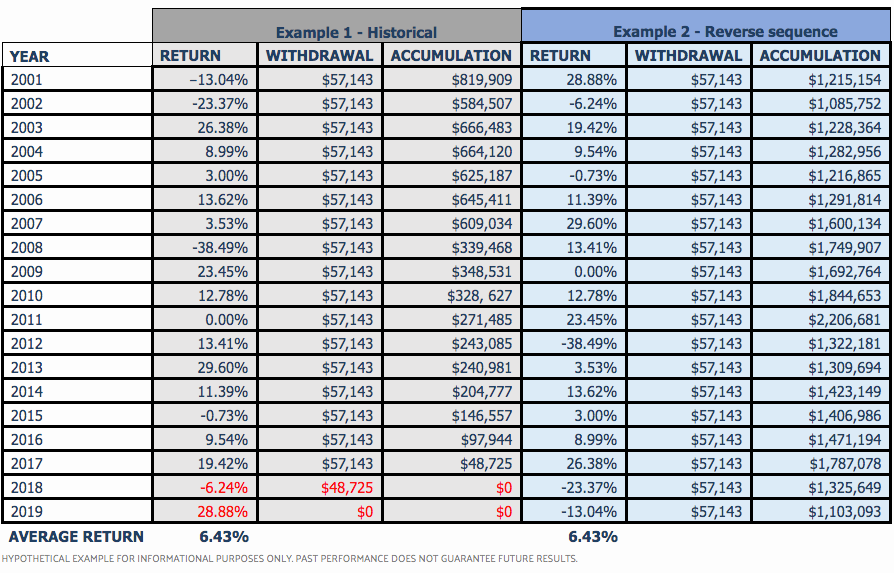Risky business: How sequence of returns can make or break your client’s retirement
The sequence of returns risk, or sequence risk, analyzes the order in which returns occur. Poor returns during your distribution years can do lasting damage to your long-term retirement outlook. To get an idea of how a sequence of returns works, let’s examine the following scenario
MEET JESSICA
Buckle up because we're going back in time. The year is 2001. Jessica, your prospective client, is retiring after 40 years working at a local hospital. She wants to know how much income she could withdraw annually from her retirement savings. Jessica runs the numbers herself with a simple calculator based on the following:
Do you see that 6.43% annual rate of return? We know most clients want things simple and easy, and that a nice and tidy 6.43% delivers just that. But as an advisor, you know the market doesn’t return the same exact percentage each year. It’s far from reality.
Why is this important? Simple retirement calculators typically show a level return. Sure, the average rate of return in retirement is very important. What's more critical during one's income years is the order of these returns.
Looking at 2001 through 2019 in the table below, example one simply shows the historical returns. Example two reverses the order of these same returns. The average return remains 6.43% for each example. Take a closer look, however, at the accumulation columns. Which side of the table will Jessica fall into? Which one does she want? And knowing all this, can she retire with confidence?

TAKE OUT THE GUESSWORK
Most prospects and clients like Jessica crave predictability, flexibility, and peace of mind. Rather than default to status quo products, it’s time to break from the pack with unique strategies designed to perform in a variety of market conditions. Contact us at 866.866.7050 ext. 2 to get access to powerful stress-testing tools and time-tested solutions.
FOR AGENT USE ONLY.

